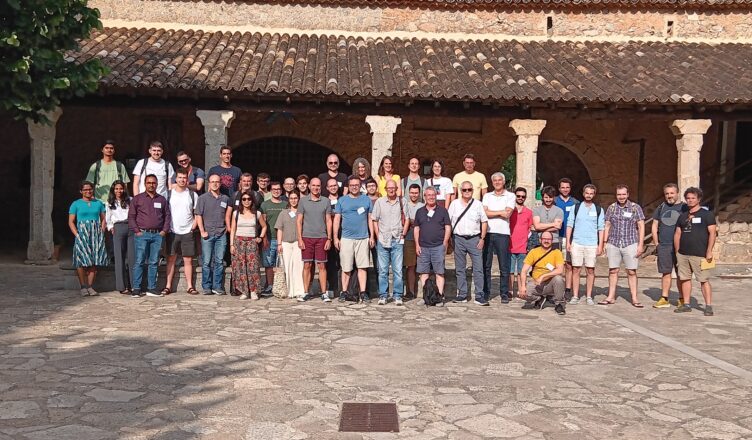From June 3 to 5, 2025, the IX Reunión Española de Física Solar y Heliosférica, organized by the Solar Physics Group of the UIB, was held at the Santuario de Lluc in Mallorca, bringing together experts to explore recent advances in solar and heliospheric physics. The meeting featured a strong representation from researchers at the Universitat de les Illes Balears (UIB) and the Institute of Applied Computing and Community Code (IAC3).
The conference placed special emphasis on state-of-the-art numerical simulations, observational techniques, and the development of solar instrumentation. Taking place as the Sun nears the peak of its activity cycle, the event also highlighted major international collaborations such as ESA’s Solar Orbiter, the balloon-borne Sunrise III mission, and the construction of the European Solar Telescope (EST).
Researchers from the UIB and IAC3 contributed significantly to the scientific discussions. Manuel Luna presented a study on the excitation of large-amplitude oscillations in solar prominences triggered by nearby flares. Guillem Castelló showcased preliminary results on the automatic detection of oscillations in Solar Orbiter images using spectral techniques and Bayesian inference. Xavier Garcia applied Bayesian model comparison to investigate the damping mechanisms of transverse coronal waves. Miquel Cantallops discussed the coupling between fast and Alfvén waves in partially ionized plasmas with shear flows. David Martínez analyzed the influence of Hall currents and ion-neutral collisions on the propagation of Alfvénic waves. Llorenç Melis examined the onset of Kelvin-Helmholtz instabilities in prominence-corona interfaces under the effects of ambipolar diffusion. Varsha Felsy explored the role of thermal instability in the formation of coronal rain. Finally, Roberto Soler, who showed new results about the role of torsional oscillations in prominence threads and their transition to turbulence
These contributions reflect the diversity and strength of the solar physics research being conducted at the UIB and IAC3, particularly in the fields of MHD wave modeling, solar atmosphere dynamics, and space weather diagnostics.
The meeting reaffirmed the commitment of the Spanish solar physics community to collaborative, cutting-edge research, and marked another step forward in understanding our dynamic Sun.
A complete description of the event and the scientific programme is available here.











